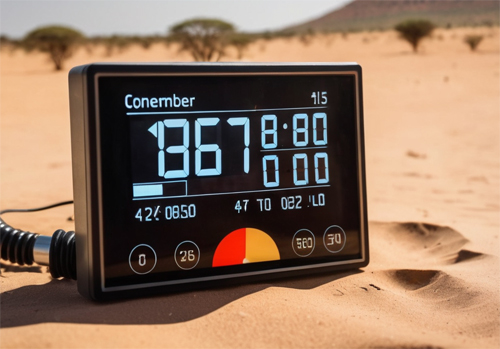Displays used outdoor often encounter many harsh weather conditions, such as heavy rain and snow, extreme degree, strong wind. TFT LCD displays have emerged as a reliable solution for overcoming the situation.
One of the key challenges faced by LCD screens in harsh weather conditions is the risk of damage from impacts and external elements. To address this vulnerability, LCD display module manufacturers have introduced impact-resistant safety glass as a protective solution.
This robust material, such as tempered glass or acrylic variants, shields the LCD screen from potential collisions and natural factors. Some manufactures even design enclosures that can create an impermeable barrier to make the displays remain fully operational even in the wettest conditions ranging from 5%-98% RH.

Conventional LCD screens typically operate within a limited temperature range of -10°C to 50°C. However, for LCD display application in industrial control, outdoor products, and other demanding fields, this range may fall short.
To meet these requirements, manufacturers have developed wide temperature LCD solutions. These specialized displays utilize advanced liquid crystal mixtures and other design enhancements to extend the operating temperature range significantly. With a wider range of -20°C to +60°C, and even up to 70°C for some modules, TFT LCD displays can withstand scorching summers and freezing winters alike.
In low-temperature environments, liquid crystals within TFT LCD displays tend to solidify, leading to increased viscosity and image persistence issues. To overcome this challenge, heaters are incorporated onto the TFT LCD module.
Manufacturers offer two types of heaters - Glass Heaters and PET Heaters. Glass Heaters, made of glass substrates, optimize LCD visual clarity by heating up the display to the appropriate temperature.
On the other hand, PET Heaters, made of flexible and thin PET material, provide a thinner and more bendable heating solution.

Overheating is a common challenge faced by TFT LCD displays, both from internal and external heat sources.
External heat sources are relatively easier to manage, such as through the integration of fans and ventilation ports to dissipate heat. However, internal heat generation poses a more complex issue. For example, backlight sources can generate substantial heat when operating at high voltages and currents.
To mitigate internal and external overheating, manufacturers employ various strategies, including heat dissipation equipment and thermal management techniques, to ensure optimal performance and longevity of the display.

Visibility is a crucial concern for TFT LCD displays in challenging sunlight environments. Conventional displays often struggle to provide clear viewing in bright conditions. To address this limitation, TFT LCD module manufacturers have developed advanced solutions.
By elevating brightness levels to a minimum of 800 nits and sometimes surpassing 1000 nits, these displays ensure exceptional clarity and legibility, even in direct sunlight.
Through innovative features such as impact-resistant safety glass, wide temperature solutions, glass heaters, and PET heaters, TFT LCD displays offer exceptional performance and stability in extreme environments.
As technology continues to evolve, TFT LCD displays will play a more and more crucial role in ensuring uninterrupted operation and peace of mind for users in the face of ever-changing weather conditions, and also become indispensable in industrial tft display solutions.
